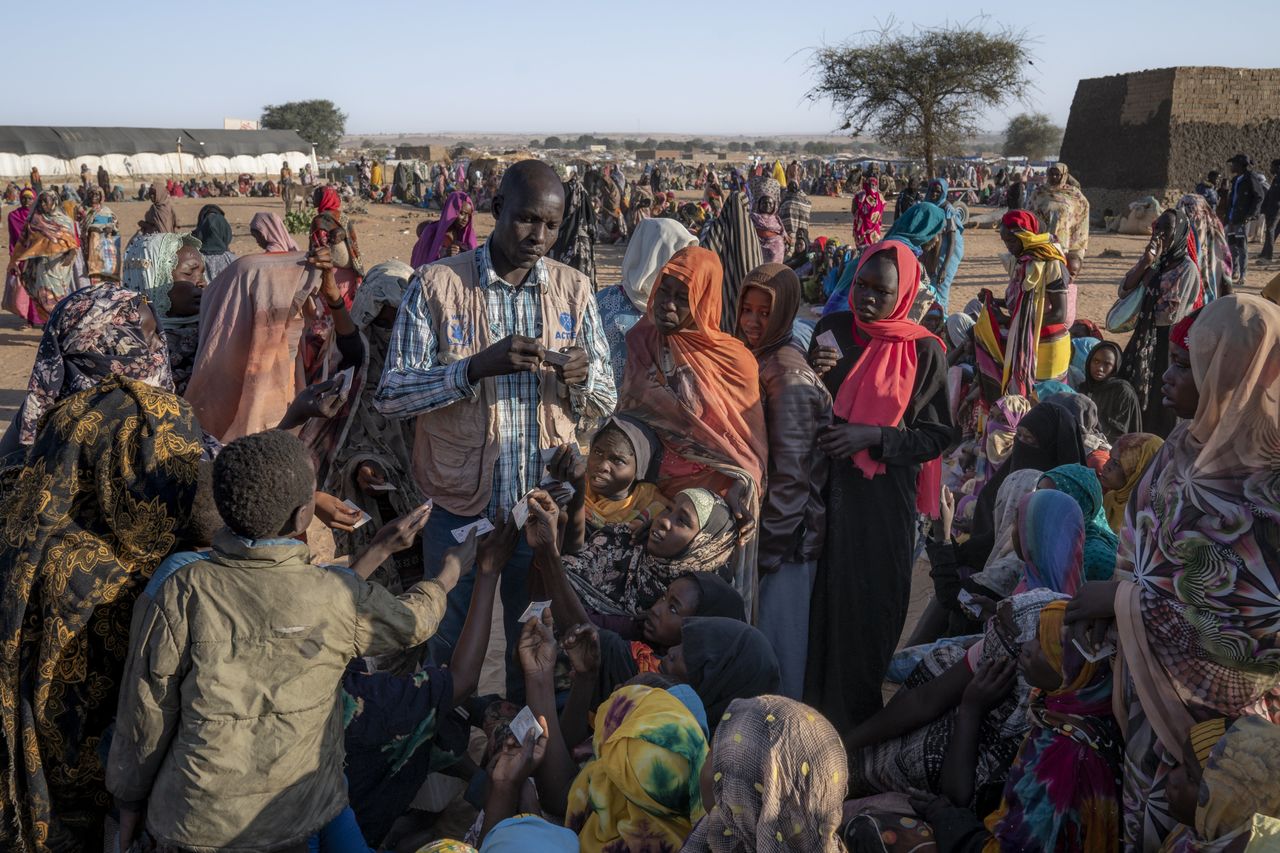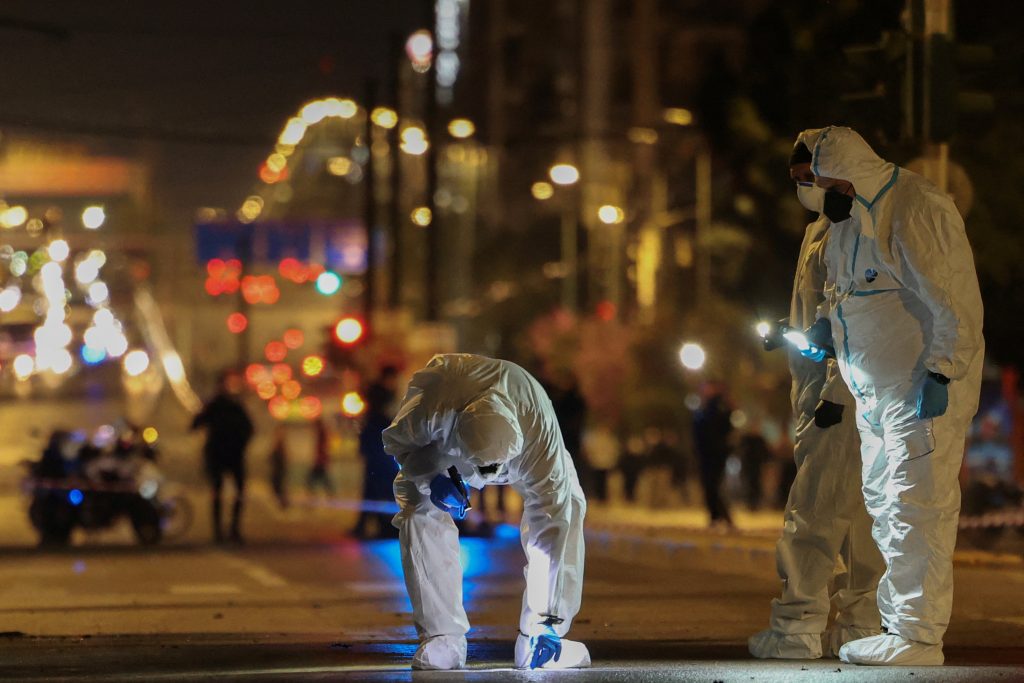For months, Hossan Taha and his wife have skipped meals to give what food they could find to their three children. But in recent days, their youngest, 2-year-old Muhammad, has stopped playing with his sisters and spends his days lying in bed or curled up in his mother’s arms.
He “is now too weak to even cry,” said Taha, a car mechanic in Sudan’s second-most populous city of Omdurman. Taha worries his son has picked up an illness his frail little body can no longer shake. “There is no hospital to take him to,” he said.
One year into a deadly war for power between Sudan’s top two generals, the country of 47 million people is in the midst of one of the worst humanitarian disasters in recent history.
Tens of thousands have died in the fighting between Sudan’s military, commanded by the country’s de facto president, Gen. Abdel Fattah al-Burhan, and the paramilitary Rapid Support Forces, which are led by Burhan’s former deputy, Gen. Mohamed Hamdan Dagalo .
More than 8.5 million Sudanese have been driven from their homes—including 2 million who have fled to neighboring countries—and many now live in displacement camps that receive little to no outside help. Medical charity Doctors Without Borders said in February that in just one camp in the province of North Darfur, a child is dying from the effects of malnutrition and unsafe drinking water every two hours.
United Nations agencies warn that in the coming weeks and months, more than 220,000 Sudanese children could die of starvation. By the end of the year, that number could rise to 700,000, a toll that could rival that of the Ethiopian famine of the 1980s.
The U.S. and other foreign governments have so far failed to bring the two parties back to the negotiating table, after multiple promised truces collapsed in the early weeks of the war. Both Burhan and Dagalo, better known as Hemedti, have signaled their willingness to keep fighting until one side wins.
The two generals teamed up in 2019 to oust Sudan’s longtime dictator Omar al-Bashir , but their uneasy partnership collapsed into open warfare on April 15 last year after months of tensions over who would ultimately control the country’s armed forces and mineral wealth.
The RSF still holds vast parts of the country, including almost all of the Darfur region, where its mostly Arab fighters have perpetrated mass atrocities against indigenous Black communities, as well as much of the capital, Khartoum. But in recent weeks, the military—aided by its acquisition of Iranian attack drones and new armed groups joining its efforts—has notched important territorial gains, including Omdurman, which sits across from Khartoum on the other side of the Nile River.
The war has collapsed Sudan’s already fragile economy and food production. The finance minister, part of the military government now based in the seaside city of Port Sudan, recently estimated that gross domestic product has plummeted by around 40% from a year earlier.
Fields in the agricultural heartland of Gezira state, which before the war produced half of Sudan’s sorghum and wheat, lie fallow. Aid workers and rights activists interviewed by The Wall Street Journal said that the RSF, which took much of Gezira in December, has destroyed irrigation canals to prevent the military from using them as trenches in its current counteroffensive.
The consequences of the breakdown will become more apparent in the coming weeks and months, when Sudan enters its annual lean season that usually lasts from May to October. Experts warn that that’s when parts of the country, including displaced people in Darfur and Khartoum, will likely slip into famine.
Some of the war’s heaviest fighting has concentrated on the capital, turning once bustling markets and government buildings into rubble and supersizing the disruptions for the rest of the country.
Banks have struggled to access their servers at the central bank and their own headquarters in the capital, making it difficult for many citizens and businesses to draw from savings or obtain cash. Over the past two months, much of the country has been in a near-total telecommunications blackout that has paralyzed money-transfer apps many had come to rely on for remittances from abroad.
“What we are seeing is an overlay of several different kinds of crises,” said Alex de Waal, the executive director of Tufts University’s World Peace Foundation, who has researched the history of famines.
In addition to the collapse of local mechanized agriculture, the war has bankrupted businesses that used to import food and other essentials. Making matters worse, several of Sudan’s neighbors—Chad, South Sudan and Ethiopia—are facing their own domestic food crises, in addition to dealing with a massive influx of war refugees.
“It’s something we have never seen before,” said de Waal.
What little food is available is too expensive for many Sudanese who have been out of work since the start of the war.
Prices of major staples such as sorghum, wheat and corn have tripled across several cities compared with a year ago, according to the Famine Early Warning Systems Network, an initiative founded by the U.S. Agency for International Development after the hunger crises of the 1980s.
Neighborhood committees that used to coordinate pro-democracy protests against Bashir and later against Burhan and Dagalo now concentrate on raising money from the diaspora to feed the hungry.
“Life is unbearable,” said Asim Mokhtar, who volunteers at a soup kitchen in Khartoum. “We can’t get supplies any more, prices are unaffordable and insecurity has worsened.”
The U.N., the U.S. and others have called out the Sudanese army and the RSF for deliberately stopping food aid from reaching those who most desperately need it. Of the around 5 million Sudanese who are already experiencing emergency levels of hunger, 90% are in areas the World Food Program says it can’t access.
Combatants routinely hijack and loot trucks and warehouses loaded with food and block aid from entering areas controlled by their opponents. Militants manning checkpoints demand payments from food transporters or rob them, witnesses and local activists say.
In Omdurman, where Hossan Taha lives with his family, a 12-pound bag of millet flour now costs around $20—more than five times the price before the conflict. Prices of gasoline and diesel have quadrupled.
The family had fled to a displacement camp in Gezira state in the early days of the war, but returned to Omdurman after the military retook much of the city in February. They were able to move back into the family home, which was partially destroyed by an artillery shell, and Taha hoped he would be able to find some work fixing cars.
But when he spoke to a Wall Street Journal reporter by phone on Friday afternoon, the family’s last meal had been a bowl of porridge made from water and millet two days earlier.
“We can’t find anything to eat,” Taha said. “We are sleeping on empty stomachs.”
Write to Nicholas Bariyo at nicholas.bariyo@wsj.com



